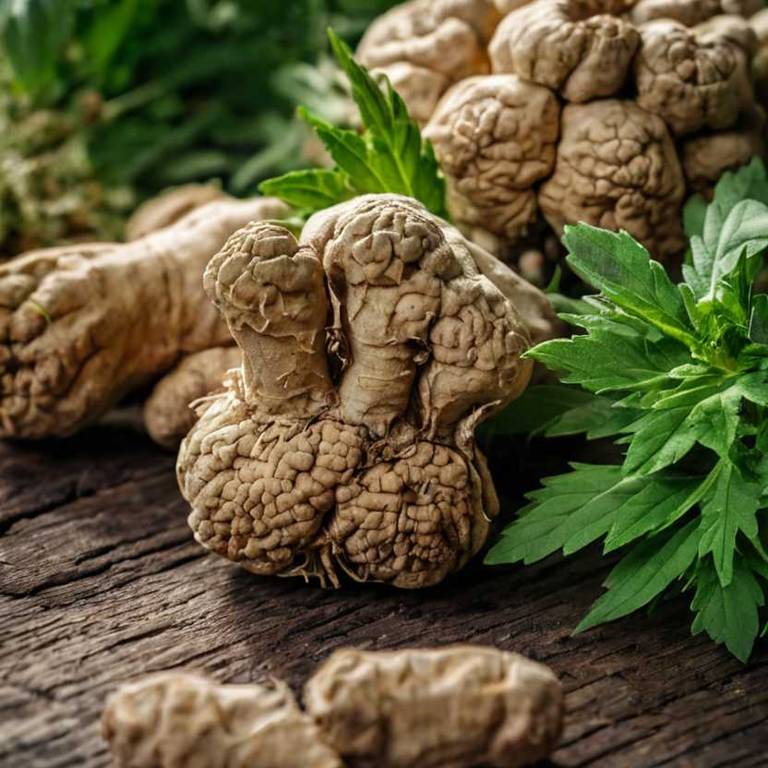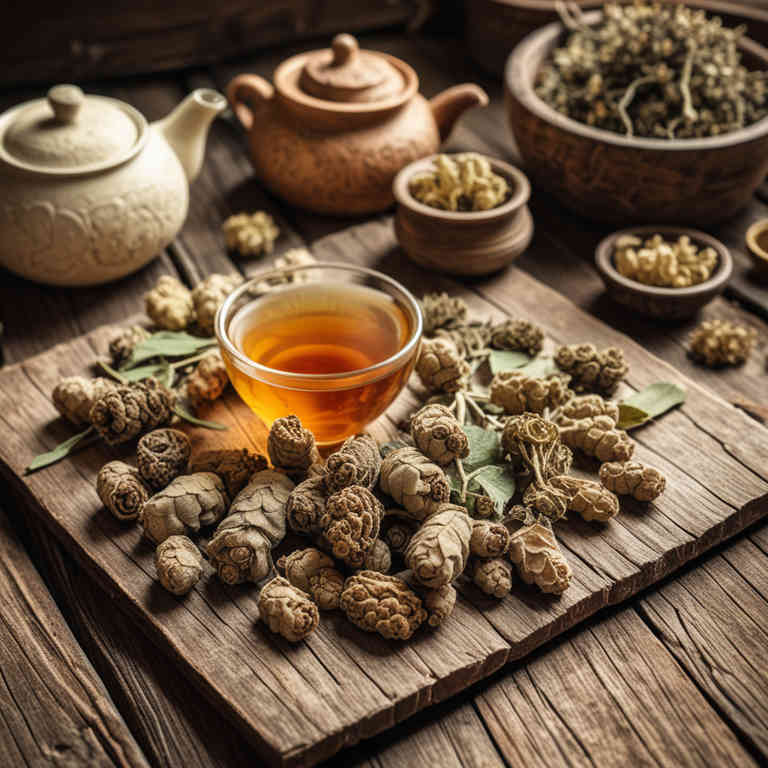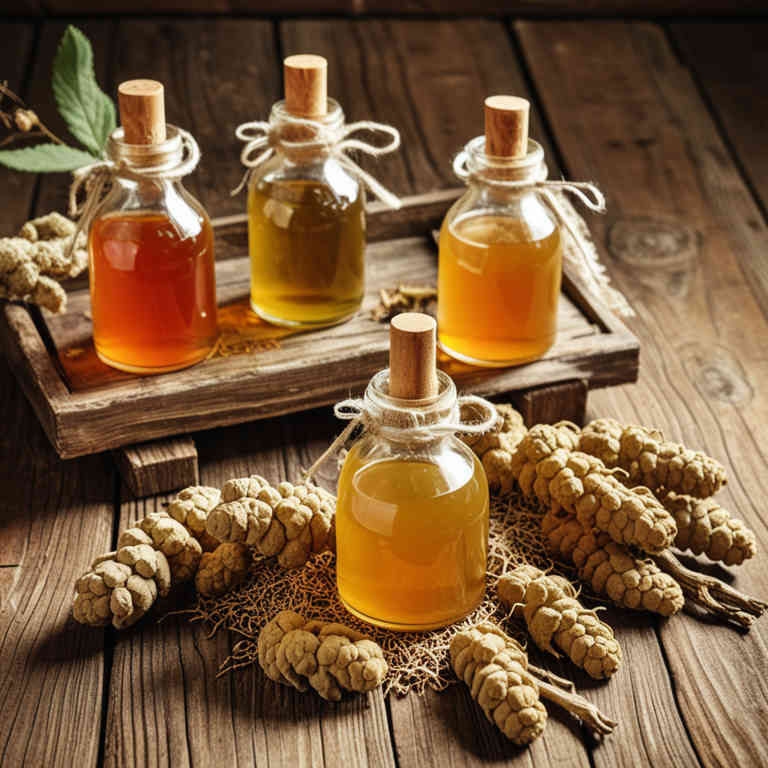10 Best Panax Notoginseng Preparations

The best medicinal preparations of Panax notoginseng are decoctions, tinctures, teas, capsules, and creams, each offering unique benefits for health and wellness.
Decoctions involve simmering the root in water to extract its active compounds, while tinctures use alcohol to create a concentrated liquid form.
Teas are a simple and popular way to consume notoginseng, often used for its calming and circulatory effects.
Capsules provide a convenient and standardized dosage, making it easy to incorporate into daily routines.
Creams, on the other hand, are applied topically to promote wound healing and reduce inflammation.
Below there's a list of the 10 best herbal preparations of panax notoginseng for medicinal purposes.
- 1. Decoctions
- 2. Tinctures
- 3. Teas
- 4. Capsules
- 5. Creams
- 6. Syrups
- 7. Lozenges
- 8. Oinments
- 9. Liniments
- 10. Oils
1. Decoctions
Panax notoginseng decoctions is commonly used to promote blood circulation, reduce inflammation, and aid in wound healing.
These decoctions are widely employed in traditional Chinese medicine to treat conditions such as cardiovascular disorders, trauma, and menstrual irregularities. The most common medicinal uses include alleviating symptoms of hypertension, improving circulation, and supporting recovery from injuries. The bioactive constituents responsible for these effects include saponins, flavonoids, and polyphenols, which possess anti-inflammatory, antioxidant, and antithrombotic properties.
These compounds contribute to the plant's reputation as a powerful herbal remedy for various health conditions.

2. Tinctures
Panax notoginseng tinctures is commonly used to promote blood circulation, reduce inflammation, and support cardiovascular health.
These tinctures are frequently employed in traditional Chinese medicine to treat conditions such as bleeding disorders, trauma, and chronic inflammation. They are also used for their potential to alleviate symptoms of hypertension and improve overall circulatory function. The bioactive constituents responsible for these effects include saponins, such as notoginsenoside R1 and Rg1, as well as flavonoids and polyphenols.
These compounds are believed to exert anti-inflammatory, antioxidant, and cardioprotective effects.

3. Teas
Panax notoginseng teas is commonly used to promote cardiovascular health, reduce inflammation, and support wound healing.
This herbal preparation is widely used to treat ailments such as hypertension, bleeding disorders, and trauma-related injuries. It is also believed to enhance circulation and reduce stress and anxiety. The bioactive constituents responsible for its medicinal properties include saponins, alkaloids, flavonoids, and polyphenols.
These compounds contribute to its anti-inflammatory, antioxidant, and hemostatic effects.

4. Capsules
Panax notoginseng capsules is commonly used to promote blood circulation, reduce inflammation, and support cardiovascular health.
They are frequently employed in traditional Chinese medicine to treat conditions such as hemostasis, trauma, and cardiovascular disorders. The capsules are also used for their potential anti-inflammatory and antioxidant properties. The bioactive constituents include saponins, flavonoids, and polyphenols, which contribute to its medicinal effects.
These compounds are believed to help in reducing swelling, improving blood flow, and supporting overall wellness.

5. Creams
Panax notoginseng creams is commonly used to promote wound healing, reduce inflammation, and alleviate pain associated with injuries or chronic conditions.
These creams are frequently applied topically to treat ailments such as bruises, sprains, arthritis, and skin disorders. The medicinal properties of Panax notoginseng are attributed to its bioactive constituents, including saponins, flavonoids, and polyphenols, which possess anti-inflammatory, antioxidant, and antithrombotic effects. These compounds help in reducing swelling, enhancing blood circulation, and accelerating tissue repair.
As a result, Panax notoginseng creams are widely utilized in traditional medicine for their holistic therapeutic benefits.

6. Syrups
Panax notoginseng syrups is commonly used to promote circulation, reduce inflammation, and support cardiovascular health.
This herbal preparation is frequently employed to treat ailments such as bleeding disorders, hypertension, and traumatic injuries due to its hemostatic and anti-inflammatory properties. The most common medicinal uses include managing conditions like nosebleeds, menstrual disorders, and post-surgical recovery. The bioactive constituents responsible for these effects include saponins, flavonoids, and polysaccharides, which exhibit antioxidant, anti-inflammatory, and thrombogenic activities.
These compounds work synergistically to enhance blood circulation and support tissue repair.

7. Lozenges
Panax notoginseng lozenges is commonly used to promote blood circulation, reduce inflammation, and support cardiovascular health.
These lozenges are often prescribed for ailments such as bruises, nosebleeds, and menstrual disorders. They are also used to alleviate symptoms of hypertension and improve overall circulation. The bioactive constituents responsible for these effects include saponins, flavonoids, and polysaccharides, which possess anti-inflammatory, antioxidant, and hemostatic properties.
These compounds work synergistically to enhance the therapeutic benefits of the herbal preparation.

8. Oinments
Panax notoginseng oinments is commonly used to promote wound healing, reduce inflammation, and alleviate pain.
These oinments are frequently applied topically to treat injuries such as bruises, sprains, and contusions. They are also used to manage symptoms of arthritis and other inflammatory conditions. The bioactive constituents responsible for these effects include saponins, flavonoids, and polyphenols, which possess anti-inflammatory, antioxidant, and hemostatic properties.
These compounds work synergistically to enhance circulation, reduce swelling, and support tissue repair.

9. Liniments
Panax notoginseng liniments is commonly used to treat injuries, inflammation, and circulatory disorders.
These liniments are widely applied in traditional Chinese medicine to alleviate symptoms of bruises, sprains, and joint pain. They are also used to improve blood circulation and reduce swelling in various parts of the body. The medicinal properties of these liniments are attributed to bioactive constituents such as saponins, flavonoids, and polysaccharides.
These compounds are believed to possess anti-inflammatory, analgesic, and hemostatic effects, making them effective for a range of health conditions.

10. Oils
Panax notoginseng oils is commonly used to promote blood circulation, reduce inflammation, and support cardiovascular health.
This herbal preparation is often used to treat conditions such as hemorrhoids, bruises, and various circulatory disorders. It is also employed in traditional medicine to alleviate symptoms of anxiety, insomnia, and menstrual irregularities. The bioactive constituents responsible for its medicinal properties include saponins, alkaloids, flavonoids, and phenolic compounds.
These compounds exhibit anti-inflammatory, antioxidant, and hemostatic effects, contributing to the plant's therapeutic value.
